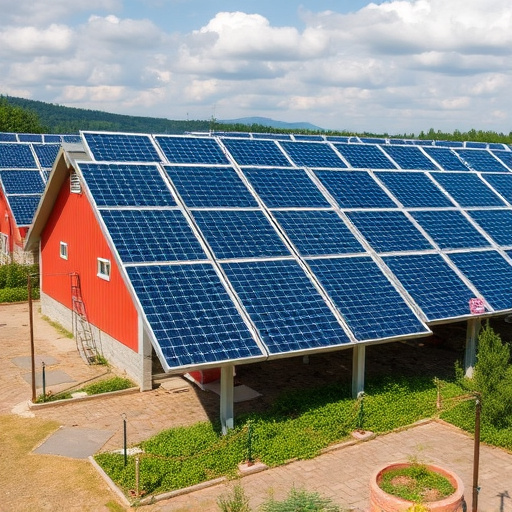Solar Energy offers a sustainable solution with off-grid systems, providing electricity independence from traditional grids. Comprising high-efficiency panels, battery storage, and inverters, these systems reduce carbon footprints and conserve resources. Ideal for rural areas, remote communities, and emergency backup power, they ensure reliability and self-sufficiency. Strategic planning, regular cleaning, and knowledge of regulations support efficient maintenance. Real-world applications demonstrate solar power's effectiveness in reducing fossil fuel reliance and enhancing resilience.
Discover the power of energy independence with off-grid solar solutions. In today’s world, embracing renewable energy sources like solar is more important than ever. This comprehensive guide explores how off-grid solar systems work and the numerous benefits they offer. From understanding key components to implementation and real-world success stories, learn how to harness the sun’s power for a sustainable future. Dive into the world of solar energy and unlock your grid independence.
- Understanding Off-Grid Solar Systems: How They Work and Benefits
- Components of a Successful Off-Grid Solar Installation
- Implementing and Maintaining Your Solar Energy Independence
- Real-World Success Stories: Embracing Life Without the Grid with Solar Power
Understanding Off-Grid Solar Systems: How They Work and Benefits
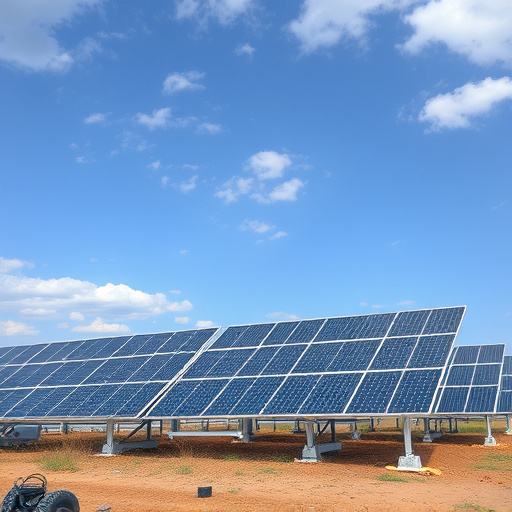
Off-grid solar systems harness the power of the sun and convert it into electricity, allowing for energy independence from traditional power grids. These systems consist of solar panels that capture sunlight, a battery bank to store excess energy, and an inverter to convert the stored DC power into AC power for use in homes, businesses, or even remote locations. One of the primary benefits of off-grid solar is its environmental friendliness; it’s a renewable source of energy that reduces carbon footprints and minimizes the impact on natural resources.
Additionally, these systems offer reliability and self-sufficiency, especially in areas with inconsistent grid power or for those seeking to reduce their reliance on public utilities. They are versatile, scalable, and can be designed to meet various energy demands, making them a viable option for rural homes, remote communities, recreational facilities, and even as a backup power source during emergencies. Solar energy, when harnessed off-grid, empowers individuals and communities to take control of their energy production and consumption, fostering a more sustainable future.
Components of a Successful Off-Grid Solar Installation
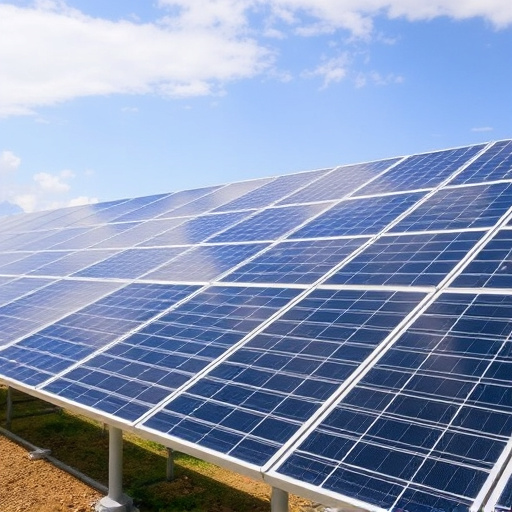
A successful off-grid solar installation relies on several key components that work in harmony to provide reliable and sustainable energy independence. Firstly, high-efficiency solar panels are essential, capturing maximum sunlight to generate electricity. When selecting panels, consider factors like wattage, durability, and warranty—investments in quality ensure long-term efficiency.
Complementing the solar panels is a robust battery storage system. This stores excess energy produced during sunny periods for use when sunlight is scarce, ensuring a consistent power supply. Inverters also play a vital role by converting the direct current (DC) electricity from solar panels into alternating current (AC), suitable for powering homes and businesses. Choosing the right size and type of inverter is crucial to match energy demands and ensure efficient power conversion.
Implementing and Maintaining Your Solar Energy Independence
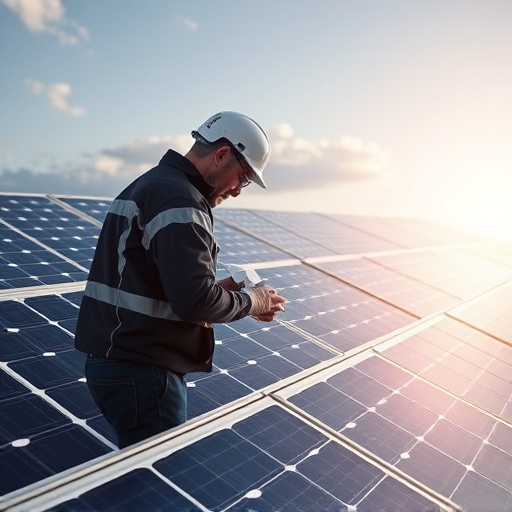
Implementing and maintaining your solar energy independence requires careful planning and consistent care. Once installed, ensure regular cleaning of solar panels to maximize efficiency. Most residential systems require minimal maintenance, but removing any debris or dust buildup can significantly impact performance. Stay informed about local regulations and incentives to leverage tax benefits and rebates, making your off-grid journey more affordable.
Monitor your system’s performance using readily available apps that track energy production and consumption. This data empowers you to optimize usage patterns and make informed decisions. Regularly inspect connections and components for any signs of damage or corrosion, addressing issues promptly to prevent system failures. By adopting these practices, you’ll enjoy reliable, sustainable Solar Energy independence for years to come.
Real-World Success Stories: Embracing Life Without the Grid with Solar Power
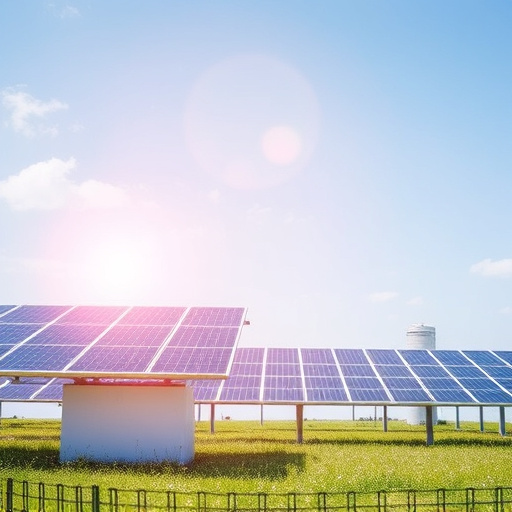
In many remote areas and off-the-grid communities, individuals have successfully embraced solar power as a sustainable solution for their energy needs. These real-world success stories showcase the potential of solar energy to provide reliable electricity independent of traditional power grids. From rural farms to isolated wilderness retreats, solar panels have been pivotal in reducing reliance on fossil fuels and diesel generators, offering a cleaner and more eco-friendly alternative.
Many such communities have reported significant benefits, including lower energy costs over time, reduced environmental impact, and increased resilience during natural disasters or power outages. These success stories inspire others to consider off-grid solar solutions, demonstrating that with the right setup and mindset, life without the grid can be both feasible and rewarding.
Off-grid solar solutions offer a promising path towards energy independence, empowering individuals and communities to take control of their power sources. By harnessing the abundant energy from the sun, these systems provide a sustainable, reliable, and cost-effective alternative to traditional grid electricity. With careful planning, strategic component selection, and proper maintenance, anyone can enjoy the benefits of solar energy independence, reducing their carbon footprint and ensuring a brighter, more resilient future. Embracing off-grid solar is not just a choice but a step towards a more sustainable world powered by clean, renewable energy sources.
